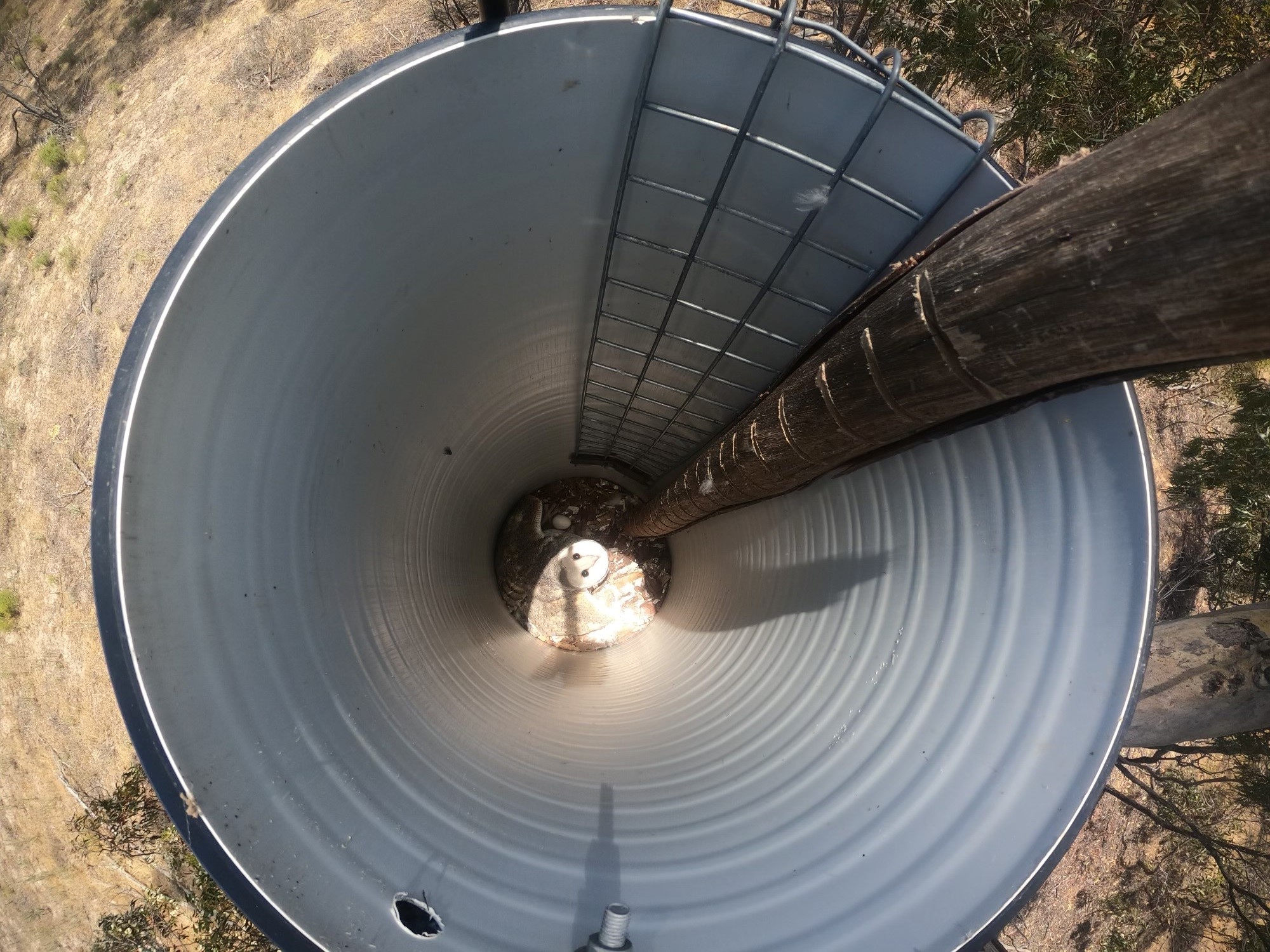The Wheatbelt community and our Healthy Environments team have been hard at work this year looking after the region’s black-cockatoos, malleefowl, eucalypt woodlands and waterways, as well as working with schools to produce a range of environmental storybooks.
Black-cockatoo habitat enhanced
This year has seen us working with 18 landholders to protect black-cockatoo nesting habitat. 60 hectares of cleared or degraded land has been planted out with a range of cockatoo food and habitat species, and other plants associated with these vegetation communities.
18 nest boxes were installed, taking the total number installed through this program to 26.
11 of the installed nest boxes have been surveyed to determine if they are being used by black-cockatoos.
3 of the surveyed nest boxes have been used by Carnaby’s cockatoos, 2 of which have successfully produced Carnaby’s black-cockatoo chicks. Fledging success is looking likely for both hatched chicks.
This project is supported by funding from the Australian Government’s National Landcare Program
A Carnaby’s black-cockatoo chick is being raised in a nest box near Wongan Hills

Black cockatoo nest box installed at a project site.

One of our Carnaby’s nest boxes near Newdegate is being used by a very different bird!
Waterways defended from increased sediment and nutrient run off
We have been working with 24 landholders and community groups to deliver our Healthy Soils, Healthy Rivers and Clean Waterways projects, aimed at managing sediment and nutrient run off into the Avon River.
27km of fencing has been installed to prevent stock access to waterways, as stock graze and trample waterway vegetation, prevent natural regeneration, compact soils, increase erosion, transport weed seeds and add nutrients and disease organisms into the water.
110ha of riparian revegetation is helping to stabilise riverbanks and filter nutrient loads before they make it to the water.
Revegetating waterways plays a crucial role in nutrient and sediment management.
These projects are supported by funding from the Department of Water and Environmental Regulation, the Department of Primary Industries and Regional Development and the Conservation and Land Management Executive Body.

Woodland communities protected
880ha of remnant vegetation containing Eucalypt Woodlands of the Western Australian Wheatbelt – a critically endangered ecological community – was protected with over 20km of fencing.
40 flora surveys were conducted by the Western Australian Wildflower Society within eucalypt woodland communities.
21 nest boxes have been installed within Eucalypt Woodland remnants to enhance habitat quality for the species that make up the ecological community.
177ha of revegetation within degraded eucalypt woodlands, or adjacent to eucalypt woodland remnants.
This project is supported by funding from the Australian Government’s National Landcare Program.

Ornate Silver Mallet woodland on private property near Newdegate

Salmon gum over scrub eucalypt woodland on private property near Varley
Malleefowl shielded from predation by introduced pests
This year has seen us working with 10 landholders who have malleefowl habitat on or neighbouring their properties.
6,000ha of malleefowl habitat was managed for foxes and cats to protect malleefowl from predation.
140ha of malleefowl habitat has been protected from grazing. Domestic stock graze on and trample native vegetation that malleefowl rely on. Malleefowl use leaf litter to maintain temperatures within their mounds, to ensure survival of their eggs. They also forage for a range of seeds, plants and insects within their habitat – all of which are impacted by stock access.
6 malleefowl mounds have been monitored for activity throughout the year. We now have 3 years of data of malleefowl use and behaviour around malleefowl mounds near Hyden.
This project is supported by funding from the Australian Government’s National Landcare Program.
Malleefowl maintaining its mound
Fox digging up malleefowl mound
Students engaged in environmental learning
5 stories have been written and illustrated by students from 7 schools across the Wheatbelt – from Mukinbudin District High School to Newdegate Primary School.
Black-cockatoo story
Waterways story
Published eNews #375, December 2022


